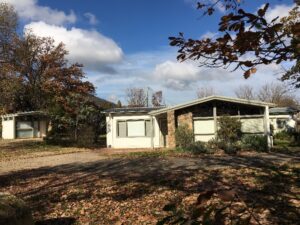
There was a period when Ainslie residents believed that the ACT planning system worked and that a community facility on land zoned for community facilities would be saved from demolition. The ACT Administrative Tribunal (ACAT) had rejected ACT Planning and Land Authority’s (ACTPLA) approval of a multi-unit development on Community Facility Land surrounded by Bill Pye Park Ainslie.
In making this decision ACAT supported many of the issues that local residents had raised about the development. Well worth a read, particularly pp22-68. https://www.acat.act.gov.au/decisions/allen-and-ors-v-act-planning-and-land-authority-and-ors Most problems were caused by trying to squeeze too many units onto the small site. Throughout the process, the supposedly independent ACTPLA, demonstrated that they were siding with the proponent by giving approval when the development clearly didn’t meet rules contained in planning legislation. The main areas where the Tribunal found the development to be substandard were:
Parking, setbacks, fencing, solar access, minimum principal private open space for tenants, and damage to trees in Bill Pye Park. There were many other issues that the Tribunal didn’t consider as they had already found sufficient cause to disapprove the proposed development.
The member of the Tribunal’s concluded when considering the desired character of this part of Ainslie, “that the development proposal provides a change of a different order in terms of its immediate and potential long term negative effects on the landscape character of the park, flora and fauna habitats, streetscape and amenity for residents and other park users. The contrast with what is there now could not be more striking.”
It was clear that the YWCA would have to make significant changes to their proposed ten unit development to address all of the deficiencies found by the Tribunal. The YWCA had also made the untested claim during proceedings that the proposal would not be viable with less than ten units. Local residents hoped that the site would be redeveloped for the local community along the lines of the existing lease purpose clause as a childcare and community centre. These facilities are needed.
Twelve months after the ACAT decision the YWCA announced their new proposal for a nine unit development on the site with few other changes. Most of the issues found as deficient by the Tribunal had not been addressed. But this didn’t matter because the Minister for Planning announced that he would call-in the proposal which effectively stopped any third party opposing the development. He said that he had spoken to the community and this development was considered a ‘priority project’ similar to the light rail. None of the residents involved in opposing the development had been contacted. The Planning system and the ACAT appeals process is not worth the effort or community participation. ACAT decisions can simply be ignored. The YWCA’s planning and project team warned us that opposition to the development would be unsuccessful – they were right. It’s a case of not what you know, but who you know?
There is a growing trend that land that was originally concessional and owned by the community is being privatised and redeveloped as multi-unit residential developments by not-for-profit companies and social clubs. The ACT Community is losing its green community space. Community members that oppose this redevelopment are called NIMBYs and vexatious. In the meantime the public realm is being sold off, excluding its future use by the broad community. If these groups want to be developers buy residential land instead of using community land.


